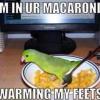After searching for days, I think the answer is "do a challenge study" but just in case, i'll ask here!
Does anyone have any official study/regulation stating what is the lowest oxygen concentration C. bot can grow at? We are using modified atmosphere packaging MAP and have the risk of C. bot, so will use %O2 as a control (and refrigeration of course). The product can't be changed/processed in a way that reduces this risk otherwise, sadly.
We had someone say they used to use at least 4% oxygen as a CCP, but they don't remember what the regulation/justification was for it. I found a source that said at lab conditions, the limit is 1%. I found a food study that said it grew at 5% but not at 10%. Another food study said no growth at 0, 5, or 10%. Is there anything out there more definitive?
Thank you :)



















